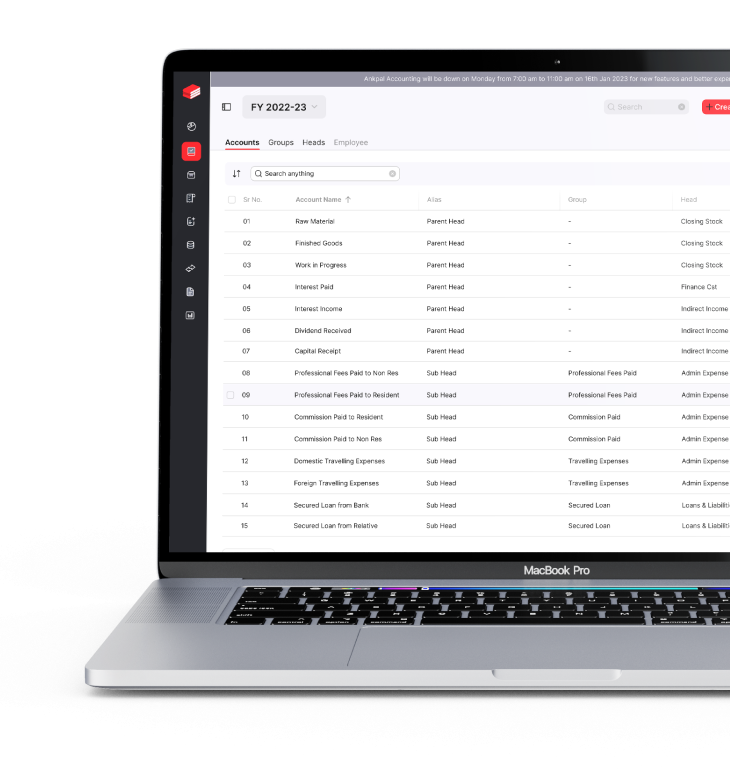
As March approaches, the GST Year-End Checklist is a taxpayer's most important document!
Some regulations take effect on April 1, 2023, and taxpayers have many duties before then. Some activities have been done yearly, while others are done on April 1, the fiscal year's start. Like every year, we've supplied a GST Year-End Checklist with all the duties you must do before the fiscal year ends. GST accounting software can help you with this.
2022-23 GST Year-End Checklist:
1. Mandatory 6-digit HSN for E-invoicing:
According to GST Notification No.78/2020 – Central Tax dated October 15, 2020, taxpayers must provide 6-digit HSN Codes for outbound shipments with AATO above Rs 5 Crores.
GST e-invoices will change significantly in the following weeks. The CBIC declared that the e-invoice gateway would only take 6-digit HSN Codes, not 4-digit ones.
2. Payment of taxes by a Goods Transport Agency (GTA) under the forward charge system
The site allows current taxpayers supplying Goods Transport Agencies Services to pay tax using the forward charge method, as per Notification No. 03/2022-Central Tax (Rate). They can submit their selection by navigating to Services > User Services > Opting Forward Charge Payment by GTA (Annexure V). The option cannot be withdrawn throughout the year. The choice is available for the Financial Year 2023-24 until March 15, 2023.
3. LUT: Exports/SEZ Supply
Rule 96A of CGST Rule-2017 mandates registered taxpayers to submit a Letter of Undertaking (LUT) in Form GST RFD-11 for exporting goods or services without IGST, with applications due by March 31, 2023, or before export and SEZ supply.
4. Using or avoiding GST schemes
The GST Composition Scheme allows small taxpayers to opt in or out of the scheme by March 31, 2023, with Form CMP-02 required. The GST Notification 14/2019 raised the small taxpayer turnover limit to Rs. 1.5 Crores. Registered persons with a turnover of Rs 5 Cr. can file quarterly GST returns and pay tax monthly under the QRMP scheme using a GST return filing software with options until April 30, 2023.
5. Refund of GST
A simplified GST procedure allows taxpayers to seek refunds for overpaid taxes, with accurate paperwork required. Reimbursement will be credited to bank accounts and applications close on March 31, 2023.
6. Create new invoice numbers.
The 2019 GST advice recommends starting a new invoice series for the next financial year. Rule 49 addresses issues with Bills of Supply using a Composition Scheme or exempted goods or services. Non-compliance with these rules may cause difficulties in producing E-Way Bills, Form GSTR 1, and refund requests.
7. Pending ITC
Use all input tax credits for the year, reconcile GSTR 2B with Purchase Invoices, and reconcile 2B credit for vendor follow-up and expense accounting credits.
8. E-way bills vs. GSTR 3B/GSTR 1 entry, accounting entries, and sales in financial statements
At all sites, GSTR-1, GSTR-3B, accounting entries, Financial Statements, and E-Way invoices record sales identically. Value changes might lead to interest, fines, or GST audit marks.
9. Amendments /Rectification:
In March 2023, taxpayers must correct errors in GSTR-1 or GSTR 3B returns from the previous year, reconcile ledgers with submitted returns, and adjust discrepancies in GSTR 3B, including erroneous GSTIN uploads and omitted invoices.
10. Physical Stock Checking:
Prepare for income tax and GST audits by matching actual stock and book entries. Physical stock inspections should include ITC reversals. Check GST return filing software for missing book sales to detect discrepancies.
11. Reversing Blocked Credit:
Section 17(5) of the CGST Act 2017 demands ITC reversal if you write down inventory at year-end.
12. For FY 2022–2023, reconcile the GST TDS/TCS credit reconciliation with the e-Cash Ledger on the GST site and the books of accounts.
Year-end GST TDS/TCS credit goes for E-Cash. Therefore, use GST accounting software to check this amount against your records.
13. Payment to vendors within 180 days
Paying commitments on time at the end of the fiscal year prevents backlogs, ensures vendor payment, and facilitates reconciliation and ITC claims.
Conclusion
GST compliance requires more concentration and effort than ever before. It is the taxpayer's responsibility to ensure they follow the rules.








